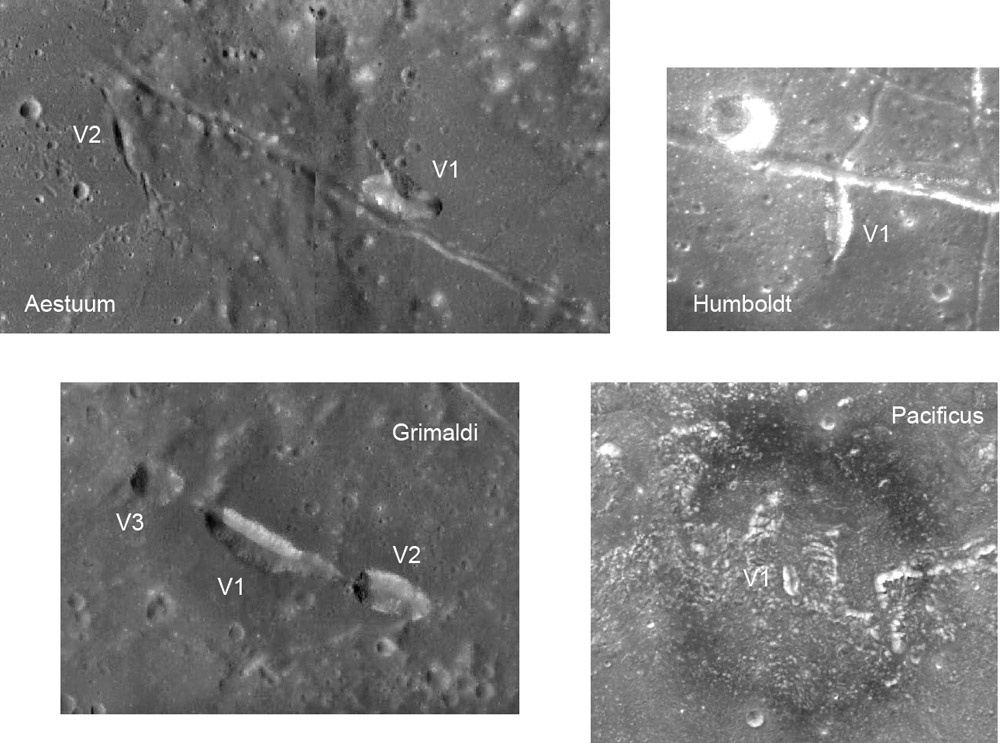Difference between revisions of "September 30, 2012"
| Line 11: | Line 11: | ||
Aestuum and Grimaldi images from LRO QuickMap, Humboldt from M^3 (QuickMap), and Pacificus from Clementine. Numbering system from Google lunar vent [https://docs.google.com/spreadsheet/ccc?key=0AvbvFapw3U9cdFRpaTNScF84UEdsSjlpMlIweFJOa1E spreadsheet].<br /> | Aestuum and Grimaldi images from LRO QuickMap, Humboldt from M^3 (QuickMap), and Pacificus from Clementine. Numbering system from Google lunar vent [https://docs.google.com/spreadsheet/ccc?key=0AvbvFapw3U9cdFRpaTNScF84UEdsSjlpMlIweFJOa1E spreadsheet].<br /> | ||
<br /> | <br /> | ||
| + | <p><b>Yesterday's LPOD:</b> [[September 29, 2012|Odd Interiors]] </p> | ||
| + | <p><b>Tomorrow's LPOD:</b> [[October 1, 2012|Whitewashed!]] </p> | ||
<hr /> | <hr /> | ||
| − | |||
| − | |||
| − | |||
| − | |||
| − | |||
| − | |||
| − | |||
| − | |||
| − | |||
| − | |||
| − | |||
| − | |||
Revision as of 12:24, 7 February 2015
Cloudsourcing Vents

Would you like to participate in a research project? With the 74 m resolution of the Lunar Reconnaissance Orbiter Wide Angle Camera images, as readily available at QuickMap, it is possible to discover features that were previously unknown. Among these are vee-shaped volcanic vents as shown above. The most famous, and probably largest, is the vent at the center of the dark pyroclastic ring on the southern Cordillera Mountains. The dark ring is unofficially called Mare Pacificus and is the only known ring around a vent. But many filled in patches of pyroclastics exist with vee-shaped vents near their centers - the Aestuum and Grimaldi vents are examples. The Moon-Wiki has a page for vents that Danny Caes has added to but there must be many more vents than anyone is aware of. I propose that interested LPOD readers help discover and characterize vents and become coauthors of a 2-page abstract to be submitted in January for the 44th Lunar & Planetary Science Conference to be held in Houston in March, 2013. Just as did my catalog of concentric craters presented at the 9th LPSC, a listing of vents will be a first document to review a significant number of these volcanic landforms. We can look at the distribution of their sizes, associations, and distributions. In this case the volcanic origin is known, but a good question is why do these vee-shaped (or football shaped as Jim Mosher said) vents form in some cases but not always (see the Alphonsus dark halo craters)? And how are these elongate vents related to the often curved elongated vents at the start of the Hadley Rille and some others? Presumably, an elongated vent forms over a linear rille or fracture, and a circular vent doesn't. But until we collect a number of examples we can't say this is actually the case. So lets start a search for vents and a discussion too. I have started a spreadsheet that is accessible and editable by all who have the link. As you discover vents add them to the list - making measurements on QuickMap. And if you have comments, questions add them to the discussion. I hope enough folks will be interested in this project to discover dozens or perhaps hundreds of vents.
Chuck Wood
Technical Details
Aestuum and Grimaldi images from LRO QuickMap, Humboldt from M^3 (QuickMap), and Pacificus from Clementine. Numbering system from Google lunar vent spreadsheet.
Yesterday's LPOD: Odd Interiors
Tomorrow's LPOD: Whitewashed!



